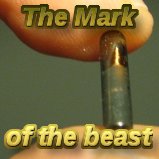| Temple Institute holds first 'crimson worm' harvest in 2000 years |  |  |  |
| Israel |
| Written by Chris Perver |
| Tuesday, 22 July 2008 04:22 |
This link from my friend Sandy. The Temple Institute have held what may be the first ever harvest for the tola'at shani, or crimson worm, for around two thousand years. A few weeks ago, the Temple Institute revealed that they had begun the manufacturing process of one hundred and twenty priestly garments, which are to be used in the administration of the Third Temple. The organization published photographs of the 'Kohanim', the priestly tribe, being measured for their garments. The garments are being woven using flax imported from India, and are being dyed according to methods that would have been used in Old Testament times. The priestly garments are to be spun using three different colours of thread, purple, crimson and blue. The crimson dye is obtained from a certain type of insect, a crimson worm, that has recently been rediscovered in Israel. On the 16th of July, Rabbi Chaim Richman of the Temple Institute lead a group into Samaria to harvest the crimson worm, which is necessary for the completion of the priestly garments. Quote: "ON THE AFTERNOON OF THE 13TH OF TAMMUZ (JULY 16TH), the Temple Institute organized an historic event: the first tola'at shani - crimson worm - harvest in the land of Israel in perhaps 2000 years. The location of the harvest was the Samarian hilltop village of Neve Tsuf. The immediate purpose for the event was the need to gather the crimson worms for the purpose of creating the avnet - the sixteen meter long belt for the bigdei kehuna - the priestly garments now being produced by the Temple Institute. The long-term goal was to educate a new generation about the elusive tola'at shani, how to harvest it, and how to produce from it the crimson dye prescribed in the Torah for a number of Temple related purposes, including the priests' avnet - belts, the scarlet wool tied onto the se'ir l'azazel - the scapegoat - on Yom Kippur, and one of the essential ingredients for producing the ashes of the red heifer. I was emailed recently by a man from the US who said he had attended a meeting held by Rabbi Chaim Richman regarding the rebuilding of the Temple. At that meeting, Richman said words to the effect that Israel already has the Red Heifer, but he did not elaborate further. Many of you may remember the Red Heifer that was born in Israel around 11 years ago. That heifer was later found to be imperfect after a few white hairs were discovered in her tail. It has now been revealed that Israeli scientists have apparently 'cracked' the genetic code for producing a pure Red Heifer. So it seems there is some truth to Richman's words. Israel may already have a Red Heifer, albeit unborn as yet. All that remains to be done is to train up priests who will be able to handle the animal in the manner prescribed in Numbers 19. Quote: "Late last week, on the eve of the Shabbat in week the Torah portion Hukkat is read, in which the red heifer is mentioned, it became clear that the people associated with the Temple Institute, who for 25 years have been researching the Temple and its rituals, creating vessels for future use in the Temple and maintaining contact with scientists and research institutes worldwide, believe they have cracked the genetic code that will make it possible to clone a red heifer. The "recreation" of the red heifer is likely to have a far-reaching effect on the view of rabbis who at present forbid the entry of Jews to the Temple Mount, partly because of the latter's status as "tamei met." This status describes any Jew who has ever come into contact with a human corpse or with people or objects that have touched a corpse. In terms of halakha (Jewish religious law), we are all in effect tamei met. Will the people of the Temple Institute therefore begin to clone the red heifer now? The ashes of a pure Red Heifer are necessary for cleansing the priests and the Temple Mount for the recommencement of the sacrificial system. The animal was to be killed by the priests outside the city walls. Those who slew the Red Heifer were made impure according to the Biblical law, yet the ashes of the animal were used to cleanse the priests (Numbers 19:7). How can this be? This is the question that Rabbi Chaim Richman once asked in one of his Temple Institute newsletters. The answer is simple. This was a perfect picture of the sacrifice of God's Son, Jesus Christ. The Red Heifer had to be pure, without spot or blemish, or the sacrifice of the animal would not be acceptable to God (Numbers 19:2). Jesus Christ was the One without spot or blemish (1st Peter 1:18-19). He knew no sin (2nd Corinthians 5:21), He did no sin (1st Peter 2:22) and in Him is no sin (1st John 3:5). Just as the Red Heifer was sacrificed outside the city walls in order to sanctify the people (Numbers 19:3), so our Lord would suffer outside the gate in order to cleanse us from our sins (Hebrews 13:2). Just as those who slew the Red Heifer became unclean until the evening (Numbers 19:7), so God made Jesus Christ, who knew no sin, "to be sin for us, that we might be made the righteousness of God in Him" (2nd Corinthians 5:21). Just as the ashes of the Red Heifer were put in a clean place outside the camp (Numbers 19:9), so our Lord's body was placed in a tomb in which never a man was laid (Luke 23:53). There could be no taint of sin or corruption where He was placed (Psalm 16:10). And just as the Red Heifer had to be completely red or its sacrifice would not be acceptable, so the blood of Jesus Christ is sufficient to cleanse us from all sin (1st John 1:7). There are many pictures of Jesus Christ throughout the Old Testament. The sad thing is, many observant Jews are still blinded to the identity of their Redeemer. Do you know Jesus Christ as your personal Saviour? He died for you. Trust in Him for salvation today. Source Arutz 7, Temple Institute, Haaretz |
|
|
|
|
|
|



